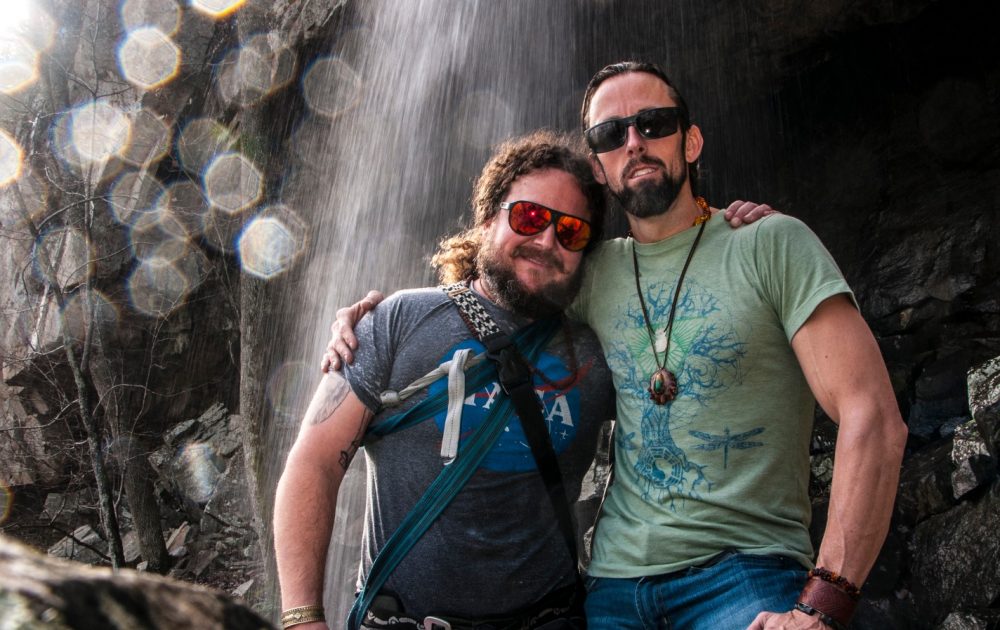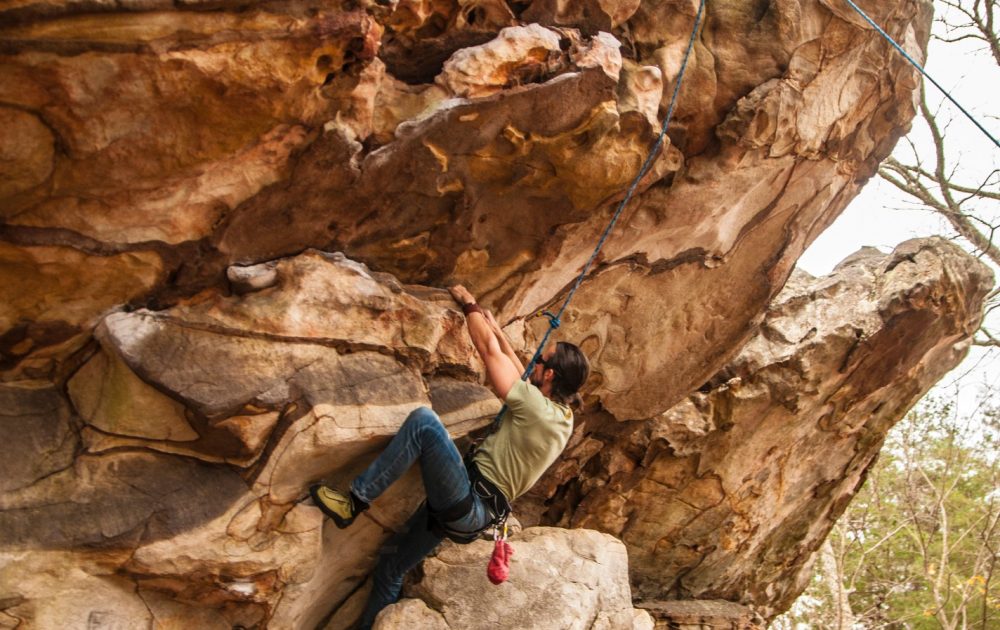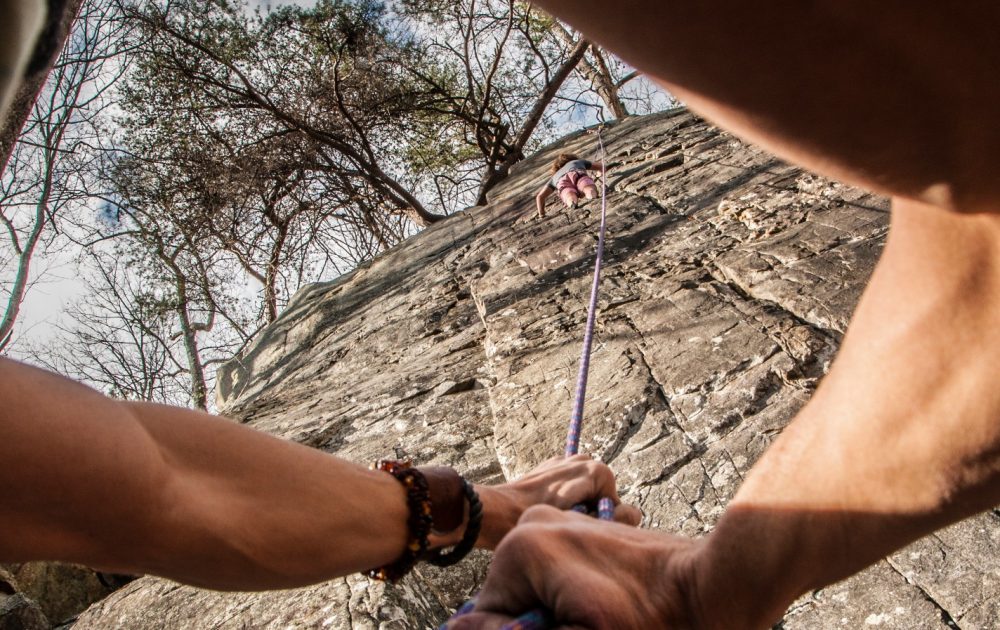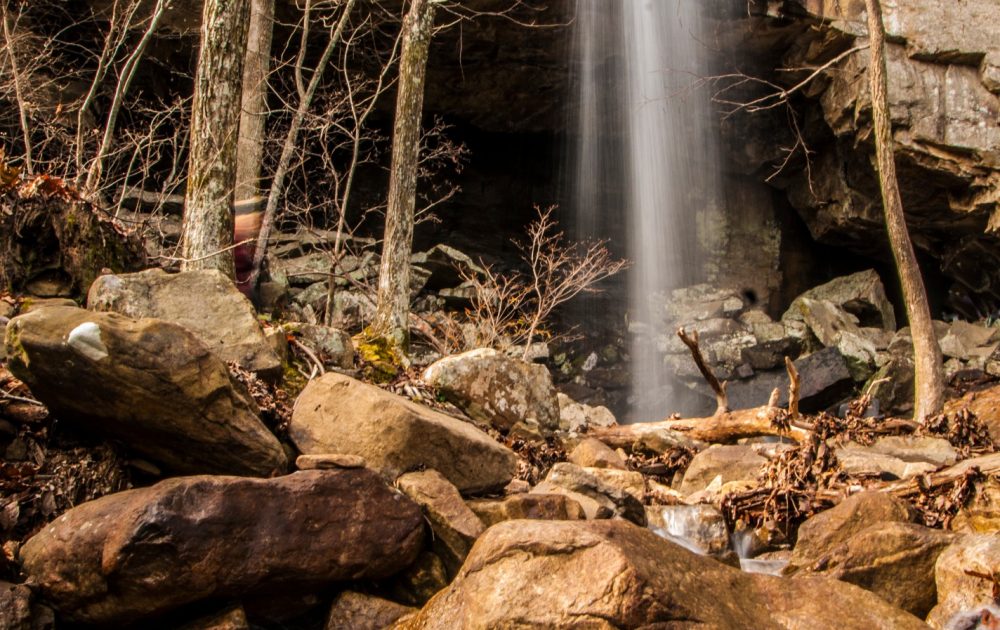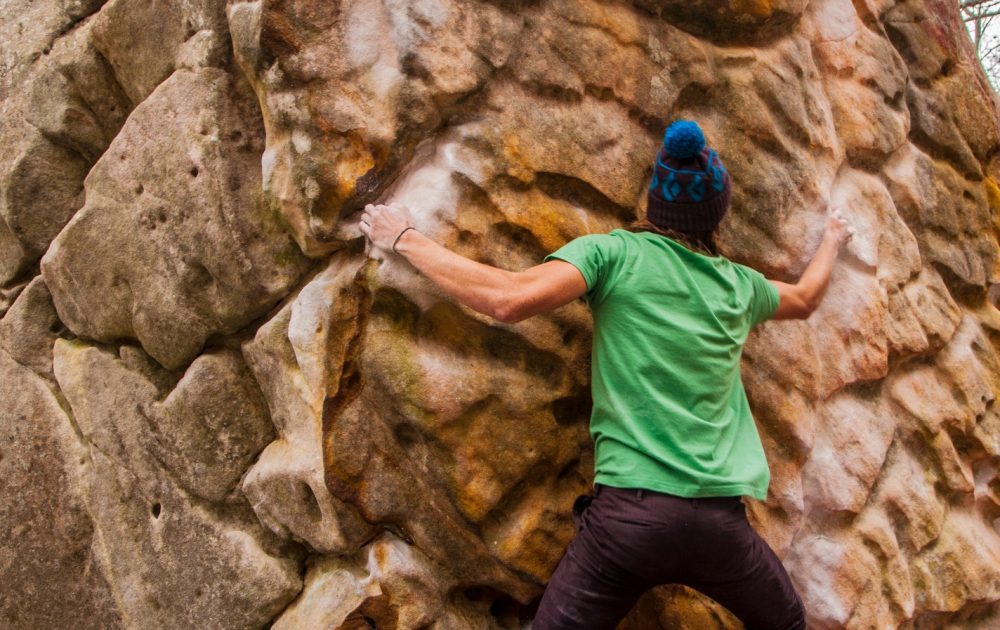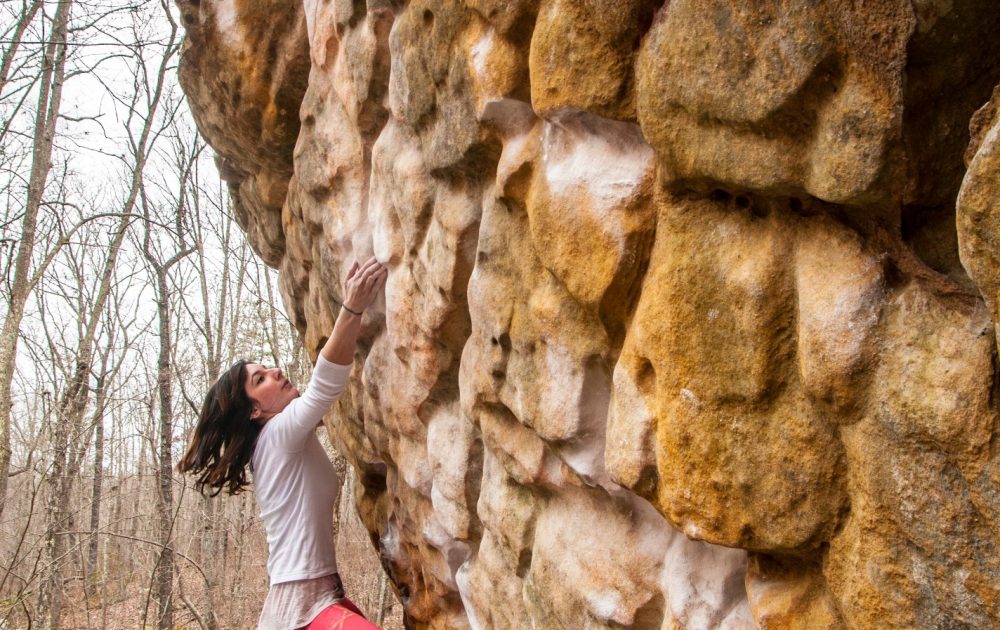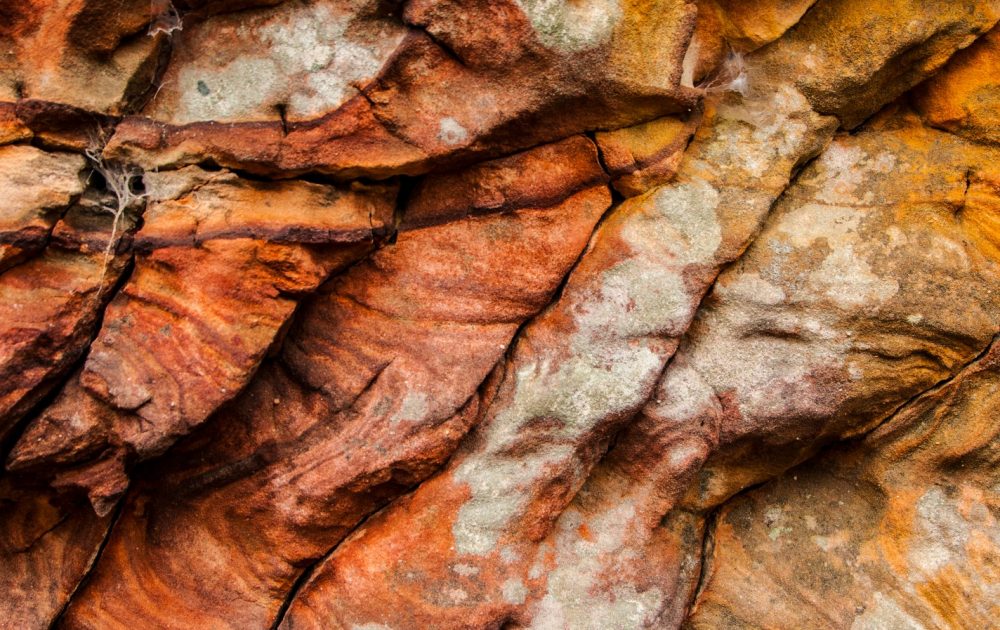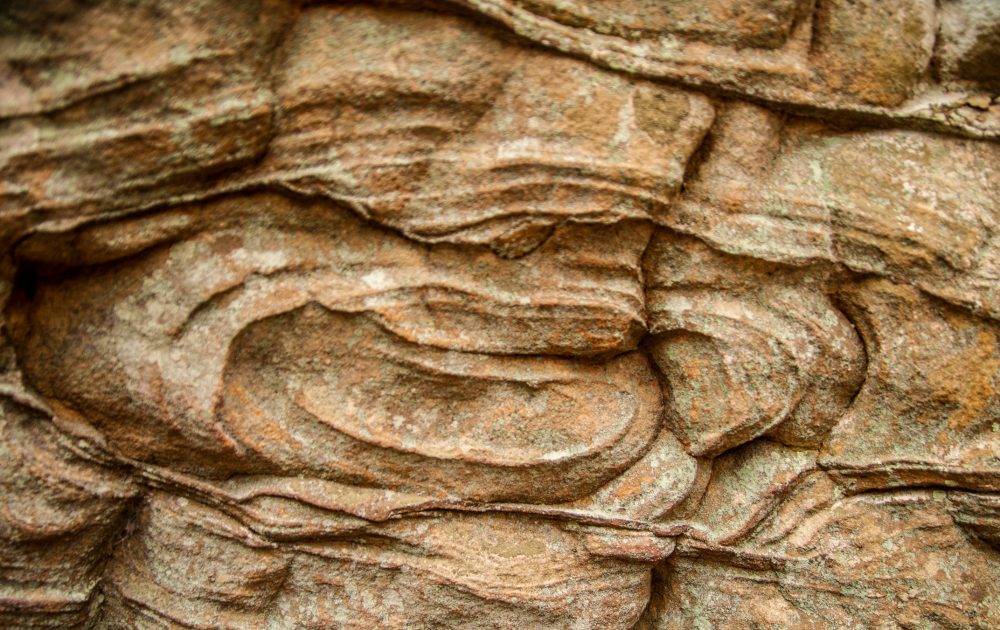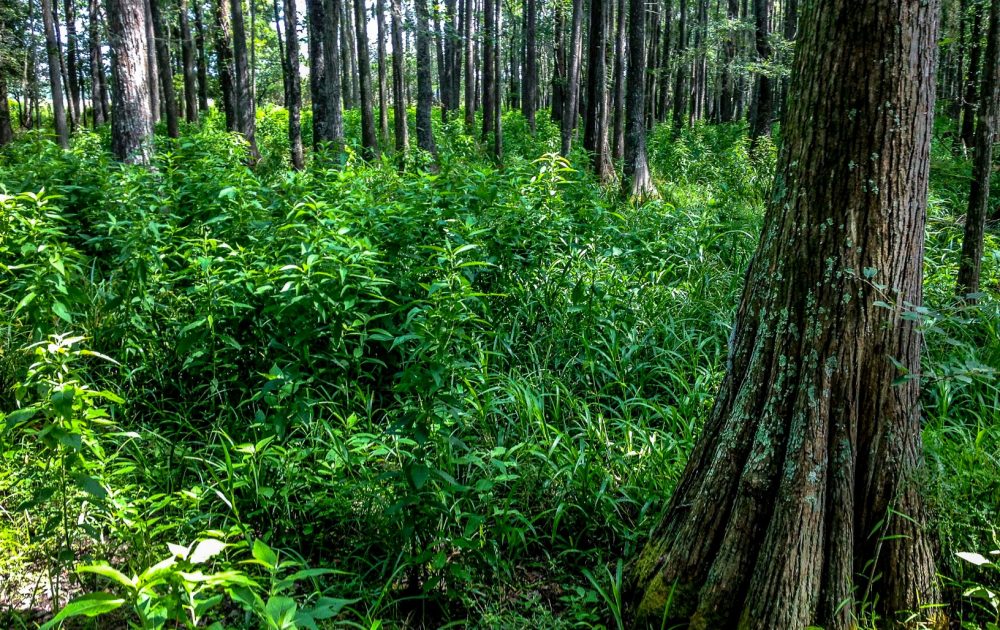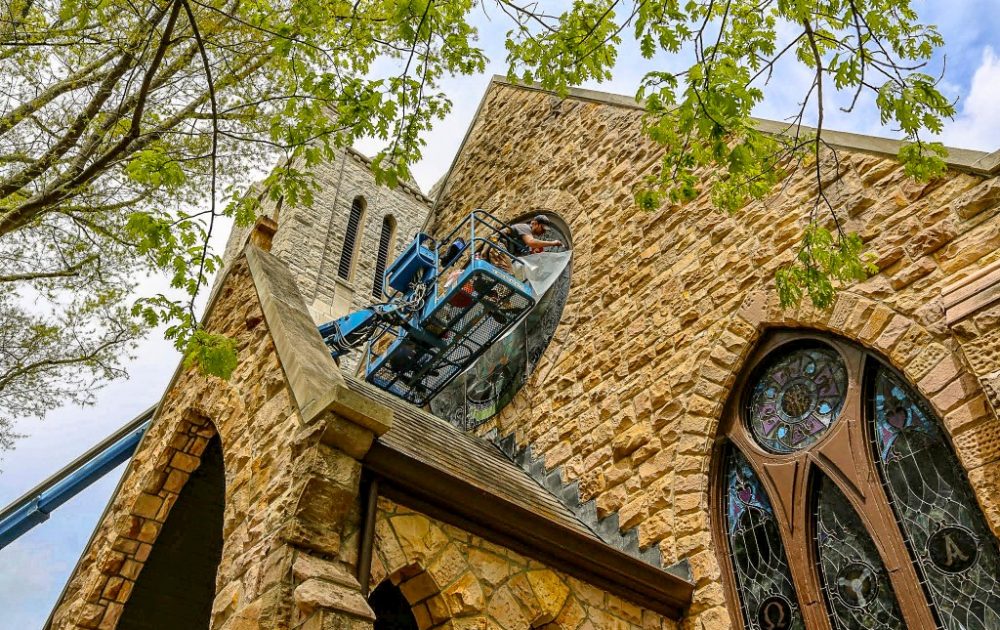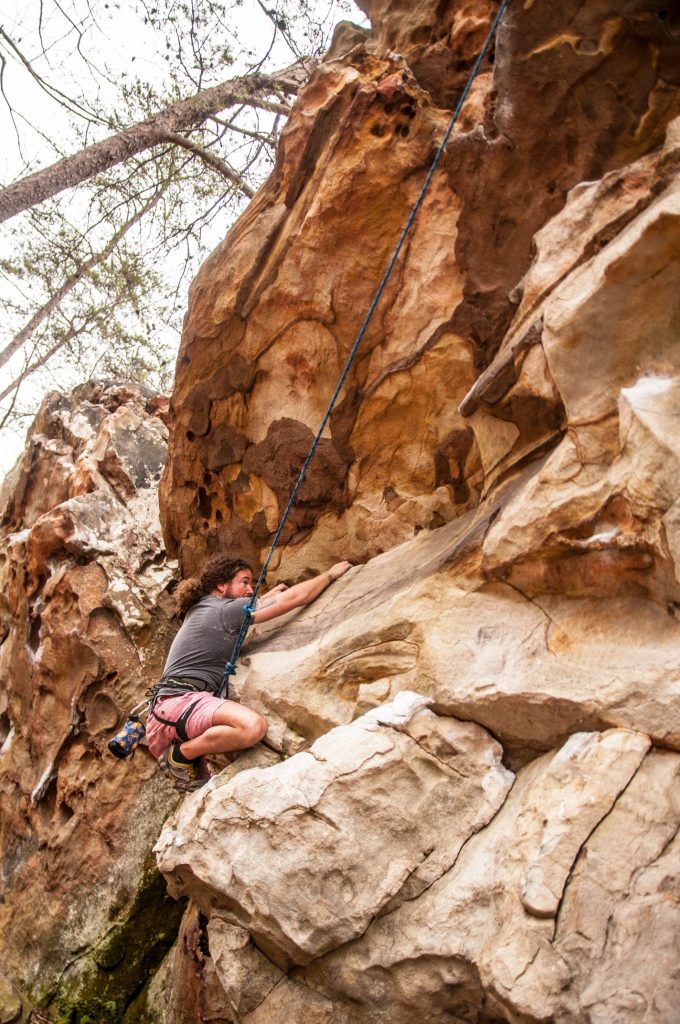
Photos by Derek Bell
Tropes have been secured, the harness fastened. Chalk-dusted hands await algid grooves of solid mineral earth as the vertical journey towers above. Pulling in the crisp air with one last intrepid breath, the climber ascends.
We all brave the trails and trials of our own metaphorical mountains. And with the new year at hand, the dreamers, achievers, and lovers alike are putting wheels into motion, carefully constructing the perfect resolution to raise personal bars to newly developed standards – looking for the perfect high. It’s all about perspective, we’ve been told; stepping back and taking a look from another angle. And then there are those who choose to step up and take that look from another altitude.
From his anchored position at the base of Lost Wall on Pigeon Mountain (just outside Lafayette, Ga.), Bryan Blalock uses an au-to-locking belay device to support the weight of his friend, Ken Callaway, as he scales the rock surface; two dudes that definitely find their sense of fulfillment at the summit. Mountaineers at heart, Blalock, owner of Stonehaven (516 Broad St.), and Callaway, owner of Summit Mist Vapors (522 Broad St.), have been climbing together for roughly five years and can’t seem to imagine a better way to raise their own bars than to brave the peaks and pinnacles of this great earth.
At the age of 13, Blalock completed his first 14,000-foot climb (known as a fourteen-er) up Mount Elbert in Colorado and hasn’t stopped yet; alongside him on most treks is his wife, Wiyanna (owner of Wiyanna’s Salon at 4 E. 3rd Ave., Rome), braving the elevation and the elements just as well. Blalock was the connection needed to fuse Callaway’s love for nature with his impending devotion to climbing and mountaineering. With horizons wide and vast, these adventurers have tackled the terrain of many a mountain-scape, including Longs Peak in Colorado, the northernmost fourteener in the Rocky Mountains, and northern California’s Mount Shasta, the 14,179-foot dormant volcano in the southern end of the Cascade Range.
A bit of distinction, if you will, for the sake of climbing trivia: rock climbing and mountaineering are different endeavors, sort of. “Until you break out a rope,” Blalock says, “it’s not quite rock climbing.” While rock climbing is more of a vertical venture, requiring anchored ropes, secure harnesses, and climbing shoes to scale a rock wall or formation, mountaineering is a bit of a bigger concept, involving ice climbing, hiking, and trekking. Sometimes mountaineering is carried out expedition style with large groups on longer journeys, at times, requiring rock climbing, depending on the route.
“You have to plan these trips,” Callaway smiles. “You don’t just go on a whim.” Even when the plans are structured and set, they remain at the mercy of the weather. Mountain weather can be very erratic; conditions vary with altitude and exposure to atmospheric winds. To put the variance from base to peak into perspective, Callaway recalls their ascent of Mount Shasta in late June/early July, the year before last. “When we started the climb, it was probably 90 degrees, and then at the summit, it was -14,” he pauses. “It was like a different planet up there.” It is a known fact among climbers and mountaineers that storms in the big hills begin building by early afternoon, after the morning sun heats the air. It is best to get an early start and begin descent before the storm gathers and introduces the threat of lightning. At the request of unpredictable elements, hikers must be prepared to change or abandon carefully laid plans.
Blalock recalls his nearly month-long affair with Cerro Aconcagua in Argentina; at 22,841 feet, it is the highest mountain in South America and the second-most-prominent mountain in the world. ”I trained for eight months, paid $10,000, and traveled halfway around the world alone,” he says. “I was on the mountain for 24 days and was turned around by a four-day storm … one day below the summit.”
While the experience may sound grim or disappointing, Blalock feels quite the opposite. “It was amazing,” he smiles. “It was 24 days on the mountain. I met a lot of cool people, got to see how a real exhibition works and I met a lot of world-famous climbers.”
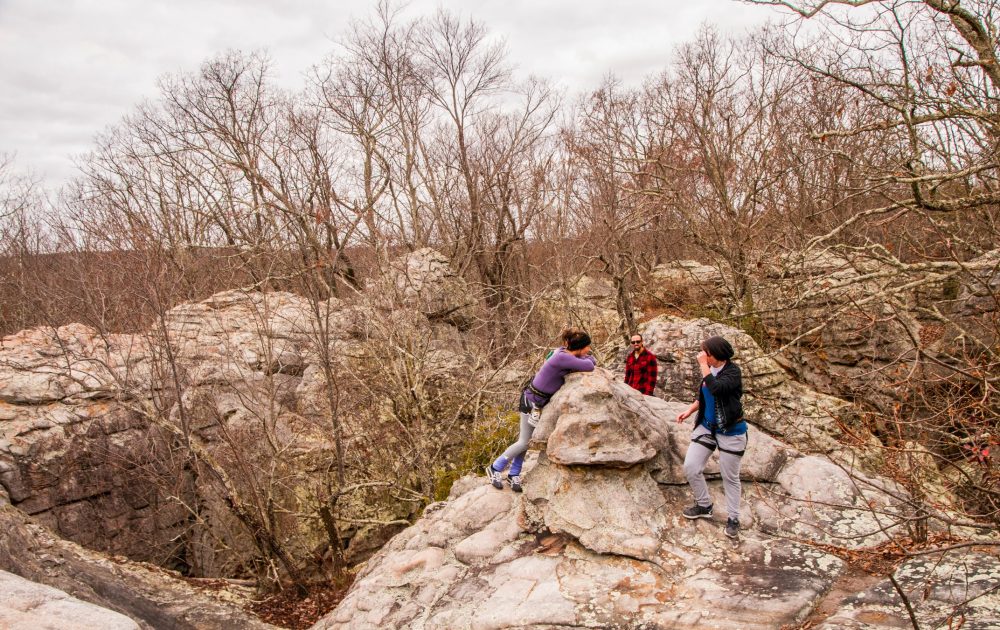
For Blalock and Callaway, it seems apparent that no matter what obstacles or austerity the mountain may dish, they never resent it or regret it; what is gained is far greater than what was endured. Callaway raises his hands. With his index fingers, he suggests a measurement that seems to be a small amount of inches and tells me that they have trekked along ledges like that for four hours at a time with an open 2,500-foot space on the outside. A journey is not a journey without obstruction.
“The pictures you see afterward are beautiful, and what’s downloaded into you both consciously and subconsciously afterward is equally beautiful,” he says. “But during … it tests me so much.”
The inclement weather, the occasion-al altitude sickness and whatever danger may have reared its head; through it all, the respect for the mountain is never lost. “I think for anyone that just pushes themselves beyond fear, through perseverance and through pain, good things come. It makes you appreciative,” Callaway nods, feeling his own affirmation. “For me, it’s been a life-changer for sure.”
So, if the desire should arise to explore the cliffs and crags of earth’s finest formations, there are some options close to home that wouldn’t require much travel or extensive skill. Further up Pigeon Mountain, the fall-en brown leaves crunch beneath rubber soles along the one-mile trail leading to a sandstone labyrinth known as Rocktown. Intricate rock formations with endless holds and routes offer constant challenge to avid climbers and plenty of earthly beauty to be explored by beginners. Even our seasoned mountaineers can deny neither the grace nor the gamut that Rocktown provides for adventure-seekers.
This area has been scaled, hiked, and scrambled by climbing enthusiasts and outdoorsmen from across the nation; by folks like Gabi Enos, 24, and Brandon Fox, 26, a Texas-bound couple, by way of Massachusetts, who made a special stop at Rocktown to test their skills on the magnificent sand-stone boulders. With them, they carried three pieces of equipment: chalk, climbing shoes and crash pads (to break possible falls). For the swirling, sedimentary sculptures that give Rocktown its majesty, those three tools will go a long way.
For novice mountaineers, Blalock recommends one of his favorite mountains on the entire East Coast as a great start. At 6,593 feet, Mount LeConte is the third-highest peak in the Great Smoky Mountains National Park and is known for the LeConte Lodge just below the summit, where hikers have access to home-cooked meals and lodging. Five trails service the summit and, aside from requiring a little endurance, this mountain is definitely beginner friendly.
For those with the urge to ascend higher altitudes, let’s talk gear. First and foremost,
good shoes cannot be stressed enough. For rock climbing, it is essential that the shoe is specifically a rock-climbing shoe with a rubber outsole for grip. For mountaineering, the shoe must fit well, slightly snug and should already be broken in. Callaway recommends good quality, lightweight apparel in layers along with rain gear and gloves. “Don’t just grab clothes out of your drawer that you would wear to go on a simple hike,” he advises.
Callaway says that towns surrounding well-known mountains typically have gear shops with the means and capacity to rent out most everything a climber or mountaineer may need.
Blalock adds that there is such a shop at the base of Mount Shasta. “You can just travel out there in your shorts and your T-shirt and rent everything you need at the shop, and it’s probably going to cost you about $250 to $300,” he says. “If you were to buy that stuff, for everything you’d need, you’re looking at $2,500; that’s jackets, ice axes, crampons (for traction on ice), base layers, rain/wind proof pants, boots, a helmet, headlamps, trekking poles, backpacks, a tent, and a sleeping bag … you can rent all of it.”
The gear for such adventures can burn a hole in the proverbial pocket, but Callaway insists that if you so choose to purchase your own equipment, the return on investment is definitely worth the stacks. “Clothes and gear within the climbing market can be very expensive,” he says, “but it’s free to go climb a mountain. So, the gear will last a long time and the quality is good. It’s kind of a one-time investment or, at least, it’ll be a long time before you have to replace anything.”
As far as ROI for the soul, “It’s definitely something everyone should try,” Blalock says. “I hear from a lot of people, ‘I’m just not a big outdoor person’ or ‘I’m not a mountain climber.’ It’s just because they’ve never done it and they haven’t felt what it gives back to you.” he smiles, “The saying, ‘Climb the mountains and receive their good tidings,’ it’s so true.”
The mountain can be unyielding, unforgiving, and unpredictable, but the spiritual introspection that it evokes culminates in an awareness of the body, a placidity of the mind, and an indomitability of the soul that cannot be undermined.
”When I finally summited Longs Peak, that was the first place that I realized, as a human being, that I was actually capable of doing something that demanding and tough, and pulling it off,” he says. “Every time you go, it’s like you’re measuring yourself as a person, and you set the bar higher each time.”
“It’s a beautiful, amazing, wonderful thing, and I recommend anyone who aspires to do it, to do it,” Callaway smiles. “Go with someone who has a little bit of experience and see what’s out there because life is beautiful. We aspire to do more; we have big plans … all in due time.”
Ecstatic about what lies on the horizon, Blalock says that his sister is moving to India in January. His eyes widen as he adds, “… 400 miles from Mount Everest.”
“If the spirit is willing, the spirit can,” Callaway smiles.
Whether you choose to explore for recreation, for sport, or for spiritual awakening, whatever the reason, you’ll find something within yourself you may not have realized, and yet it’s been there all along. How’s that for a resolution? Here’s to your new year; may you never stop challenging yourself.

